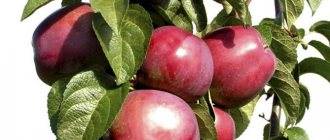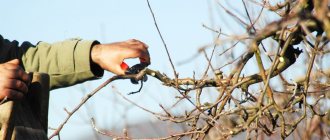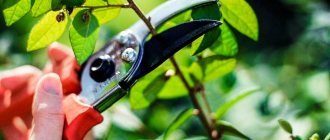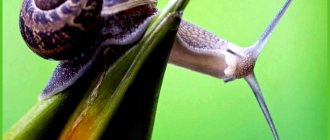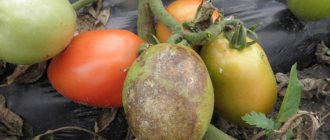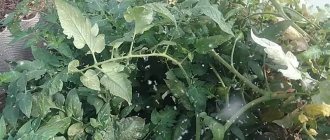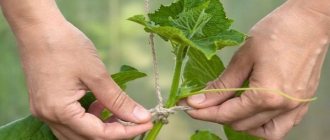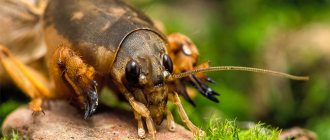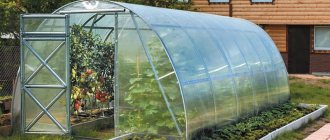Winter is approaching, which means a hungry time is coming for rodents who do not hibernate and continue to lead an active lifestyle during this difficult time for the garden. Rodents may not appear in the garden for years, and one bad winter they may suddenly destroy all the trees.
Once you find traces of rodent bites on a tree trunk, you should take immediate, radical measures and seek protection from pests. It becomes clear that the invasions of uninvited guests will be repeated and can lead to very unfavorable consequences. Damage from rodents can result in just one wound, or it can result in eating the entire trunk, gnawing it like a pencil.
Protection of tree species from rodents
An experienced gardener knows that in winter the protection of trees from rodents must be well thought out.
Hares and mice, water voles and wild rabbits cause enormous damage to garden trees in winter by gnawing off their bark. Gnawing tree bark in a circle slightly above the level of snow cover, they leave the trunk almost bare, which subsequently leads to the death of the tree, since the bark is a conductor of moisture and nutrients. They especially prefer apple and pear trees; they are less fond of cherries and plums.
Protection of tree species from rodents
Rodents are especially active and hungry in February and March. First of all, they damage apple trees and serviceberry trees; much less often they touch apricots, plums, and cherries, because the bark of stone fruit trees is bitter. Rodents are also not particularly fond of pears. The mouse usually gnaws at the tree, making its way under the snow. A water vole can severely damage the root collar of an apple tree. A wild rabbit, like a hare, destroys the bark of an apple tree.
Many garden owners believe that house mice eat the bark of their young fruit trees. However, most often the culprit is another pest - the common vole. This rodent looks very similar to the well-known house mouse, hence the misconceptions. In the summer, this rodent practically does not approach human habitation, but as soon as the time to prepare for the winter approaches, the vole immediately hurries to the orchard and vegetable garden.
With the onset of winter, tunnels appear in the snow cover of the garden, through which hungry pests approach the bark of fruit trees and then eat it. Sometimes they chew off the entire bark in a continuous strip from bottom to top on one side of the tree trunk. But most often more dangerous damage occurs when the bark is eaten away in a ring.
The bark of a fruit tree not only protects it from diseases and pests, but also promotes the movement of nutrients and water, so if it survives on at least one side of the trunk, it can at least somehow cope with its work, but if there is circular damage...
Guard and wrap
Protecting tree species from rodents
If hares and mice have become frequent guests of the garden plot, the trees need to be protected as much as possible from periodic raids and attacks. This can be done by first fencing the trunk of each tree or shoot with a mesh of metal wire. For this purpose, a fine mesh about 120 cm high is best suited. It is advisable to bury it 30 cm into the soil.
You can use soft plastic mesh to protect trees. It does not interfere with light transmission and air circulation. Having cut the mesh to the size of the tree, we wrap it around the trunk and secure it on top with wire or rope. Before the first frost, you can also wrap the trunks with polyethylene or roofing felt. However, when a thaw occurs, you should not delay removing such protective wraps to avoid overheating.
If you are not sure that you can remove the polyethylene or roofing felt in time, it is better to use natural sugar burlap. It allows air to pass through perfectly and in the spring you don’t have to worry about the material overheating, creating too sharp a temperature drop. You can use plastic mesh bags (from under potatoes or onions). Wrap them around tree trunks several centimeters thick and at least 1 m high.
The most common and cheapest way to protect the garden from mice and hares is to tie the trunks and low skeletal branches with spruce or juniper branches (at least 80 cm high) in the fall, placing the needles down. Then you need to tie the spruce branches with ropes so that they do not fall apart. You can wrap the trunks over the spruce branches with plastic film. In this case, the film will not prevent the wood from breathing, but will protect it from rodents. You can also make a fence made of plastic or metal mesh on top of the spruce branches, which should preferably be buried 25–35 cm into the ground.
Protection of tree species from rodents
Cut out fruit-bearing raspberry branches and reeds are suitable for the same purposes. You cannot tie tree trunks with straw, because it itself attracts mice.
Trees are tied before the onset of stable frosts. The main thing is to take care of the lower part of the trunk, for which the earth is shallowly raked from the neck of the tree so that the binding is slightly below the rest of the soil level, the earth is raked from above.
Tying the tree to protect it from mice will also prevent sunburn on the bark.
Around April, the persistent frosts stop and there is no need for tying. Trees should be freed from any binding on cloudy (even rainy) days in the evening. If you do this in sunny weather, the bark may burn and the shoots may dry out (for example, roses). It is best to remove the strapping gradually: first loosen it for a couple of days, then remove it and lean it against the tree trunk on the south side, and only after a few days, when the tree adapts, remove the strapping completely.
Protection of tree species from rodents
A good way to protect apple tree trunks from rodents in winter are ordinary nylon tights. They are also used to wrap tree trunks. Since the tree bark does not rot under the nylon, unlike polyethylene, there is no need to remove the wrapping from the tights at the first sign of a thaw. The undoubted advantage of this method is safety of use and additional protection against spring sunburn. You can wrap trees with tights long before the cold weather begins. There is only one drawback of the method - high cost. If you don't have many trees in your garden, you may be able to find a fair amount of old tights. If there are a lot of trees, then you can wrap young seedlings with tights, and use some other method to protect old apple trees.
Typically, mice and hares do not gnaw on the trunks of old trees, since they are not attracted to too thick a layer of dead, coarsened bark; rodents are looking for tender food. Instead of tights, you can use a special non-woven material, the cost of which is much cheaper. The tree trunk is wrapped in a spiral in several layers. Non-woven material will protect apple trees not only from rodents, but also from sudden temperature changes.
If there are no pets, special poisoned baits can be placed throughout the garden.
What can't you do?
Let's get acquainted with the list of actions that should not be done under any circumstances.
- Use straw as a covering or binding material. This is a real treat for furry ones.
- You should not use plastic bags as tying methods. They heat up in the cold and will lead to frostbite in the young tree. Some mice may try to chew through the plastic bag. This will lead to the death of the voles and, at the same time, damage to the trunk.
- You shouldn't indulge in poisons. This method will indeed help get rid of mice, but at the same time, will such a plant be safe for the next period? Indeed, in this matter you need to carefully calculate the proportions, have an idea of whether the apple tree belongs to a particular species, and so on. In order to protect yourself and your loved ones, it is better not to use this method.
Lures
Laying out baits containing poisons is an effective method. For example, Efa is a well-known effective pesticide against mice and rats. Thanks to the properties of the latest generation active substance, rodents only need to eat the bait once or twice to receive a lethal dose. Pour 5–10 g (1–2 tsp) of Efa bait onto cardboard or polyethylene and place it both in rodent burrows and on the soil surface near tree trunks. Bait must be added as it is eaten. The death of rodents occurs a few days after eating the bait.
Why do mice gnaw apple trees?
With the onset of cold weather, it’s not just plants that have a hard time. Hares, mice and other rodents are forced to look for food in the forests, where it becomes less and less every day. The attention of rodents is attracted by summer cottages where there is still something left to profit from. The bark of apple, pear and plum trees is rich in vitamins and minerals. In addition, it has a pleasant taste, which is so attractive to furry animals.
Winter is the hungriest time of the year
Also, under the bark there are insects that did not have time to hide from the winter frosts. They can also become bait. Therefore, even in the warm autumn, it is necessary to take appropriate measures to protect young trees, because they are the most attractive to mice.
Repellents
By their nature, hares are very timid animals, so ordinary large black plastic bags will be a good way to scare them away. They need to be hung next to trees or on lower branches. Creating a rustle with every gust of wind, the bags will serve as an appropriate imitation of a scarecrow in the fight against uninvited rodents.
You can hang black cardboard circles with a diameter of about 150 mm (2-3 pieces per tree) on the lower branches of trees. They are very different against the background of snow and when the wind moves, they scare away with their movement.
You can cut ribbons from soda cans and twist them into a spiral. Then hang them on the lower branches of trees so that when the wind blows they hit each other.
An alternative option is bright woven ribbons (preferably red). You can hang plastic bottles with holes on the lower branches with naphthalene tablets in them. Its pungent smell will repel rodents. During the winter period, it is advisable to renew the tablets several times.
Treatment of damaged trees
If, despite the safety measures taken, for reasons beyond the control of the procedures, the bark of the apple tree nevertheless suffered some damage, you need to know how to help the damaged tree.
Engraftment of the “donor” cortex
Engrafting healthy bark onto a damaged area of a trunk is a complex method that is not always successful. But for the sake of restoring health and proper functioning of the tree’s protective coverings, it’s worth trying. As a “patch”, take a branch from the same apple tree and, using a sharp knife, remove the bark from it in a continuous layer, adjusting it to the size of the damaged area.
The engraftment site is cleared of irregularities, and the donor coating is applied taking into account the direction of growth of the coating on the base. The fresh area is tightly wrapped with electrical tape, covering the healthy part of the trunk by at least 10 cm on each side.
After the procedure, the apple tree needs to be provided with additional feeding and regular watering. And the engraftment itself should be carried out before the movement of juices begins.
Bridge grafting
If a young seedling is damaged, it can be treated with a bridge graft. The procedure is also carried out before the start of spring sap flow. It is done as follows:
- The damaged area is cleaned down to healthy tissue.
- Last year's shoots are cut from the tree, from which connecting cuttings are then prepared.
- The length of the cuttings should be 7 cm longer than the affected area.
- On each shoot, oblique cuts of 2 cm are made on both sides.
- The cuttings are pushed under the bark below and above the affected area, covering it.
- The resulting “bridge” is covered with cling film, wrapped with twine and covered with paste for treating bark wounds.
After a few years, the established cuttings will become thicker and grow together, ensuring the delivery of nutrition from the roots to the top.
Cutting an apple tree trunk for reverse growth
This method is too radical, so it is used only if the tree has already reached 5 years of age.
The method of cutting a trunk consists of cutting down a trunk damaged by rodents above the lowest healthy bud, 2 cm higher from its location. In order to avoid the growth of a stump in the spring at the site of separation, it must first be covered with garden varnish, which will also protect it from the negative influence of the environment and various microbes.
A developed root system will help young shoots appear.
Ways to Recover Minor Cortical Injuries
Minor damage to the cortex can be healed in this way:
- Chop 200 g of linden bark into 10 cm pieces.
- Pour in 1 liter of water and bring to a boil.
- Boil for 40 minutes.
- Cool and strain.
- Cover the wounds with the resulting mixture, wrap with thick paper and tie with twine.
- The dressing should be kept intact for up to 5 months.
The restoration procedure must be carried out in early spring, before the juices begin to flow.
You can also make a healing mash for an apple tree from clay. To prepare it, fill half a bucket of clay with water 2 cm above its level. After a few hours, the swollen mass is mixed and the damaged areas are thoroughly coated. A cotton bandage is applied over the “balm”. The wounds will heal until August.
Based on the complexity of treating injured areas of the cortex and the lack of guarantee of its complete recovery, we can conclude that it would be wiser and easier to carry out timely preparations for cold weather. Moreover, currently there are a huge number of materials and methods for protecting apple trees from rodent attacks.
Previous
Pests
